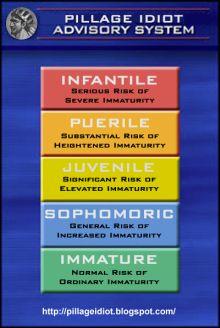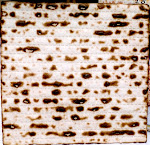I've been working on a piece on the Jewish vote, but I wanted to write now about something I discovered while doing the research, because I've never seen it before, and I think it's a very interesting fact.
We know that Jews on average are more liberal than almost any other ethnic group or subgroup in the United States. The conventional voting benchmarks (percentage for A, percentage for B) that we use for all groups are not very revealing for Jewish voters, because they basically tell us only what we know already. So I think we may need another benchmark to evaluate the Jewish vote. Here's the interesting fact:
If you look at the Jewish population on a state-by-state basis, you'll find that 75% of Jews live in "blue" states. I doubt that this disproportion is true for any other ethnic group as large as the Jews (6,155,000).
Why does that matter? Let's say that Jews across the country always vote with the majority in the states where they live. Then, the vote would be 75% to 25% for Kerry, which is almost exactly what the exit polls show. I'll call this the "equilibrium point."
Here are the seven blue states with the highest Jewish populations:
New York (1,657,000)
California (999,000)
New Jersey (485,000)
Pennsylvania (282,000)
Massachusetts (275,000)
Illinois (270,000)
Maryland (213,000)
These states alone have 4,181,000 Jews, nearly 68% of the Jewish population in the U.S. The total blue state Jewish population is 4,633,800, or 75.3% of 6,155,000. (In fact, adding Florida (620,000) and Ohio (149,000) -- two almost-blue states -- brings it to 5,402,800, or 87.8%, about seven-eighths of the national Jewish population.)
So if the "equilibrium point" for the Jewish vote is 75-25 for the Democrat, what does it all mean? It means that Jews are disproportionately liberal, but less so if we consider their vote in relation to their surroundings. Jews tend to live in areas in which they feel most comfortable politically, socially, and religiously. With such a small ethnic group, living in proximity to others fosters community adhesion. (I'm making up my own sociological jargon as I go along.) So the correspondence between liberalism and state of residence shouldn't be surprising. In fact, if you were to run the numbers on county-by-county voting, instead of state-by-state, I strongly suspect that the percentage of Jews living in "blue" counties would be well above 75 percent, and we might have an even better perspective on the Jewish vote.
So let's take the 75 percent as a benchmark. This election is a "wash" in the sense that Jews, according to exit polls, voted consistently with the benchmark. I haven't run the numbers on the 2000 election, but I would guess the benchmark was quite similar, and the Jewish vote for Gore was about 80 percent. That is, the Jewish vote in 2000 was slightly to the left of the benchmark. If I'm correct to suspect that the exit polls this year under-counted Jewish Bush voters, perhaps the Jewish vote this year was actually to the right of the benchmark, even if it was to the left of almost any other benchmark.
I don't claim that my new benchmark is truly meaningful in any absolute sense. I just think it gives us a way of looking at the vote with a point of comparison that is not miles away.
There are certainly criticisms that can be made of the use of this benchmark. I have a few myself. Suppose, for example, that all American Jews lived in New York. Would that mean the "equilibrium point" was 100%-0%, and if so, wouldn't it be meaningless? My answer is yes, and no. It is meaningless at the extremes, as in that example. It is also meaningless in landslides -- for example, in 1984 -- when no one's vote, let alone the Jewish vote, was proportionate to the population in blue or red states. But in a closely divided electorate, I think it may have some value.
Another objection: Maybe it would be more useful to total the entire vote for the blue states and weight it by multiplying it by .75, then total the entire vote for the red states and weight it by multiplying it by .25. That would provide a pretty accurate benchmark for Jewish liberalism, but we already know how it will work out. Jews will still be well to the left. I'm trying to find a benchmark that more closely explains the Jewish vote numerically.
I'd like to hear readers' thoughts on this. Have I simply latched on to a statistical fluke and blown it out of proportion? Or is this in some way a useful benchmark? And my bonus question: What would Bill James think?
November 08, 2004
A new benchmark for the Jewish vote?
Posted by
Attila
at
9:18 PM
![]()
Subscribe to:
Comment Feed (RSS)











|